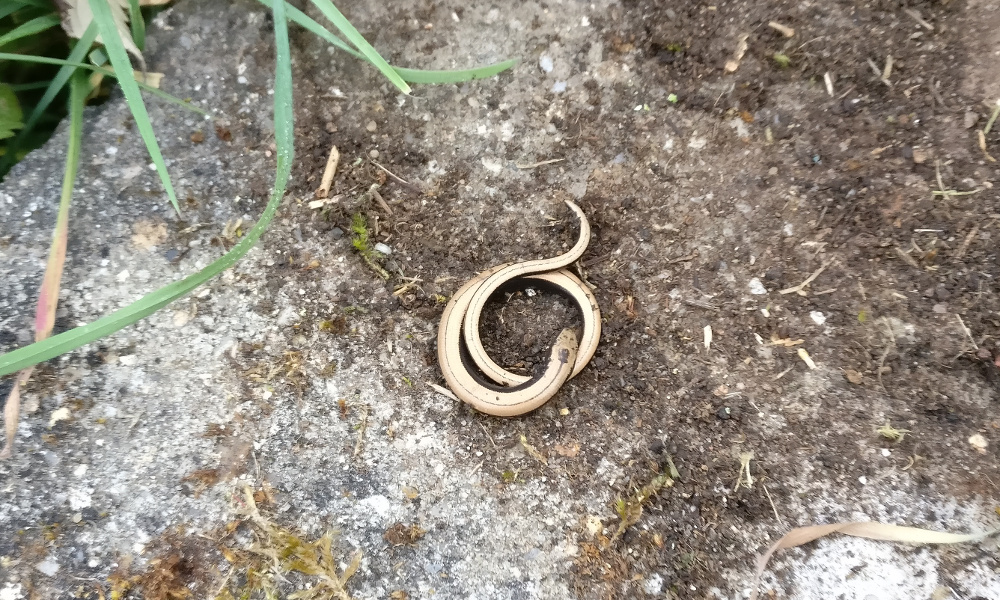Recent activities

It isn’t Slow, and it isn’t a Worm
When you go to do a ringing session, you never know what you might encounter. And sometimes it isn’t just birds, writes Roger Emmens.
I was netting and ringing at an area called the Tealeaves, part of the North Rough beside Rye Road between the RSPB Centre and the Thames Water offices. It was calm after the rowdiness of Storm Hannah, and there were some summer visitors in, making for an interesting catch of Garden Warblers, Sedge Warblers, Blackcaps and a Lesser Whitethroat, all in all enough to make it a pleasurable morning with some interesting birds.
But what made this session different was what I found under a stone slab which is left covering a net guy string between sessions. A couple of what at first glance you might take as small snakes, but which lacked the markings of a Grass Snake or an Adder: I’d stumbled upon a pair of Slow-worms!
The history of Slow-worms at Rye Meads is interesting. In 2008, a site in Buntingford was due to be redeveloped for housing, and they found more than a thousand Slow-worms there which needed to be relocated. As the planned release sites couldn’t accommodate the high number found, some were brought to Rye Meads. Around forty were released in August 2008 in the long section of rough grassland between the River Lee navigation and the Otter trail, and a few were released in rough grassland by the Toll road to the left of the bridleway at the HMWT reserve.
No Slow-worms had been seen since, and it wasn’t known if the release was successful.
So the discovery of these two is quite significant. They represent the first recorded observations in the wild across the Rye Meads recording area. The only other reptiles recorded here are Grass Snake, which is common across the meadows, and Common Lizard, which has not been reliably recorded other than one or two occasions since the 1960s, although it is interesting to see that the Kestrels nesting on the Car Park pylon do sometimes bring lizards for their young – we don’t know where they find these prey items.
Let’s hope this finding is the first of many sightings of these charming little legless lizards.
